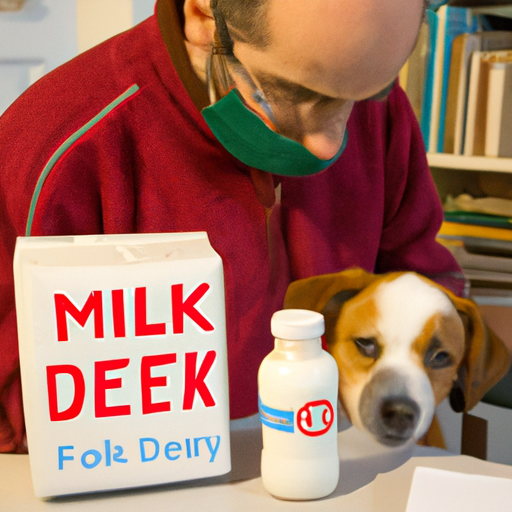Understanding Milk Fever in Dogs
Milk fever, or hypocalcemia, is a serious condition that often occurs in lactating dogs. It happens when the calcium levels in your dog’s body drop drastically. As a caregiver, you must understand that although this condition is common in nursing dogs, it can be potentially life-threatening if not treated promptly. You may notice your dog showing signs like loss of appetite, restlessness, and stiffness in the legs.
Recognizing the Symptoms
One of the first steps to treating milk fever is recognizing the symptoms. Here is a list of common symptoms to look out for:
- Muscle tremors or shaking
- Lack of coordination or difficulty walking
- Whining or apparent discomfort
- Fever and panting
- Seizures in severe cases
Your dog might not show all these symptoms, but if you notice any of them, you should take immediate action.
Home Treatment Options
Before you start any home treatment, it’s crucial to consult with your vet. They can provide you with specific advice and recommendations based on your dog’s condition. However, here are some general home treatments you can consider:
- Supplemental Calcium: Feed your dog with calcium-rich foods or give them oral calcium supplements. You can find these at pet stores or get them prescribed by your vet.
- Frequent, Small Meals: Instead of giving your dog two or three large meals a day, try smaller, more frequent meals. This can help maintain their calcium levels more steadily.
- Limit Nursing: If your dog has just given birth, limit the puppies’ nursing times. This can help reduce the strain on the mother’s calcium levels.
| Treatment | Description |
|---|---|
| Supplemental Calcium | Calcium-rich foods or oral supplements |
| Frequent, Small Meals | Small meals throughout the day |
| Limit Nursing | Reduce nursing times for puppies |
When to Seek Veterinary Assistance
While home treatment can be beneficial, it’s crucial to know when to seek professional help. If your dog’s symptoms persist or worsen, or if they show signs of severe distress like seizures, you should contact your vet immediately. It’s important to remember that while you can provide initial care at home, milk fever in dogs can be life-threatening and may require professional medical attention.
Preventing Milk Fever in Dogs
Prevention is always better than cure. Here are some preventative measures you can take:
- Balanced Diet: Ensure your dog has a balanced diet with adequate calcium, especially during pregnancy and lactation.
- Regular Vet Checks: Regular vet visits can help detect any potential issues early on, including calcium deficiencies.
- Avoid Overbreeding: Overbreeding can increase the risk of milk fever, so it’s best to limit the number of litters your dog has.
FAQ
Q: What causes milk fever in dogs?
A: Milk fever is caused by a sudden drop in calcium levels, often in lactating dogs.
Q: Can milk fever be prevented?
A: Yes, through a balanced diet, regular vet checks, and avoiding overbreeding.
Q: When should I seek veterinary assistance?
A: If symptoms persist or worsen, or if your dog shows signs of severe distress, seek professional help immediately.
Remember, as a caregiver, your dog’s health is in your hands. Knowing how to treat and prevent milk fever can ensure your four-legged friend stays happy and healthy.



